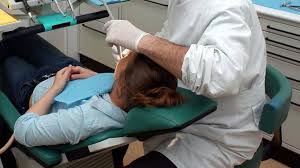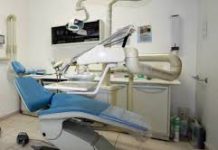Temporary dental cement.
Almost all restorative procedures come with a limited time when the patient needs a temporary restoration. Dental treatments that mostly require provisional cement are indirect restorations, such as fixed partial dentures, inlays and onlays, dental implants, fixed bridges, and of course crowns.
These indirect restorations are usually created in a laboratory, and while patients are waiting for them, they need a temporary restoration to avoid sensitivity, infection, and tooth movement. In these cases, a temporary cement has a crucial role in the proper outcome of the treatment.
Dental crown. The use.
A dental crown is usually applied to protect a damaged or weak tooth, prevent teeth shifting, has an aesthetic role and shape the gum tissue properly. The dentist or the specialist consider many factors when they choose the most suitable cement, especially according the type of material the provisional crown is made of and how long it must be kept in place.
 Temporary cement. The quality.
Temporary cement. The quality.
A temporary cement should have various qualities, encoded by dental associations, but it mostly has to provide adequate strength to retain the provisional restoration and should be low enough to allow its removal without causing damages to the prepared surface before the definitive restoration is placed.
According to dental specialists an ideal temporary cement should have such as these characteristics: easy removal of excess cement from around the margins; good marginal seal to minimize sensitivity; good retention but easy removal of the temporary prosthesis; low solubility in oral fluids; compatibility with provisional resin restorations, bonding agents, and permanent cements.
Traditionally, cement used for temporary crowns is zinc oxide-eugenol (ZOE) cement, but today the dentist has many choices with temporary cements, especially because it seems that ZOE cements can have adverse effects on the acrylic resin; anyway some provisional cements eugenol-free are not as hard as eugenol-containing cements.
Temporary crown cement. Problems.
Sometimes, for different factors, a temporary crown may fall out: in these cases, the first thing to do is to get an appointment with the dentist as soon as possible. Meantime, there a lot of different provisional dental cement sold in the drugstores, and it is feasible to re-attach the crown to the tooth.
If you lose a temporary crown, you have to clean it, put the paste in it and place the crown on the tooth, biting down gently.




